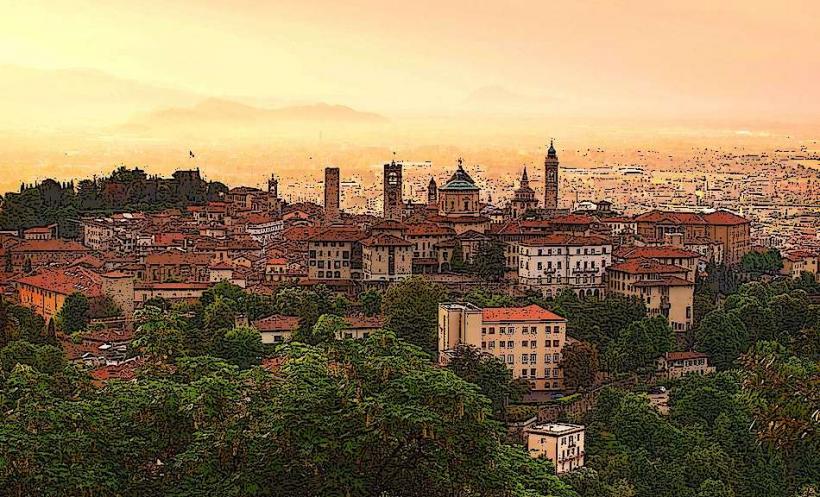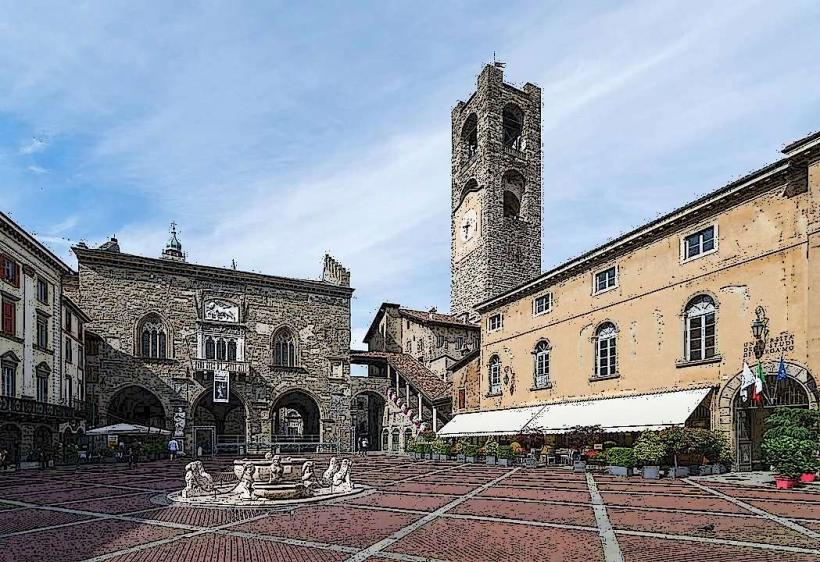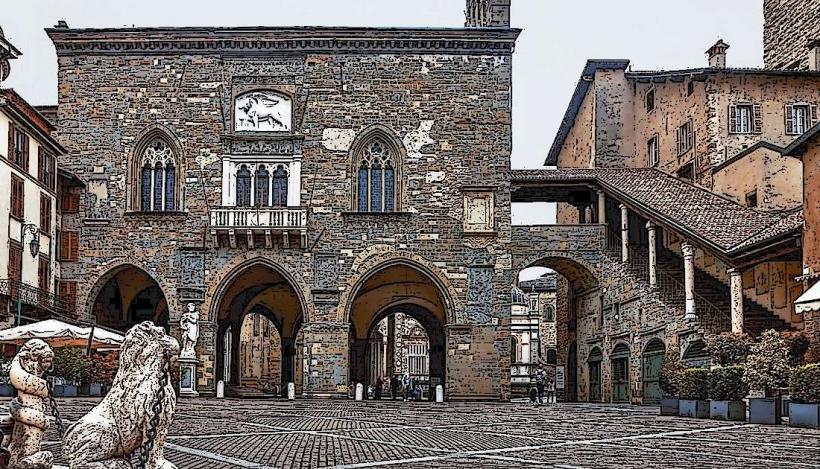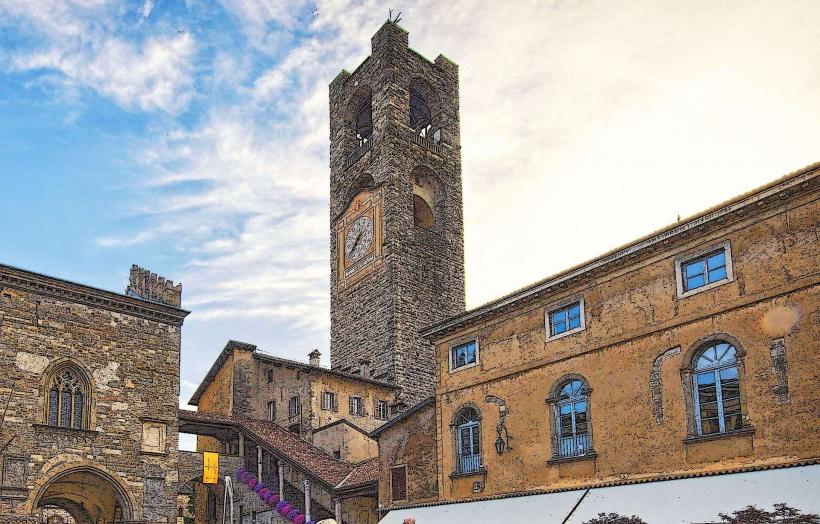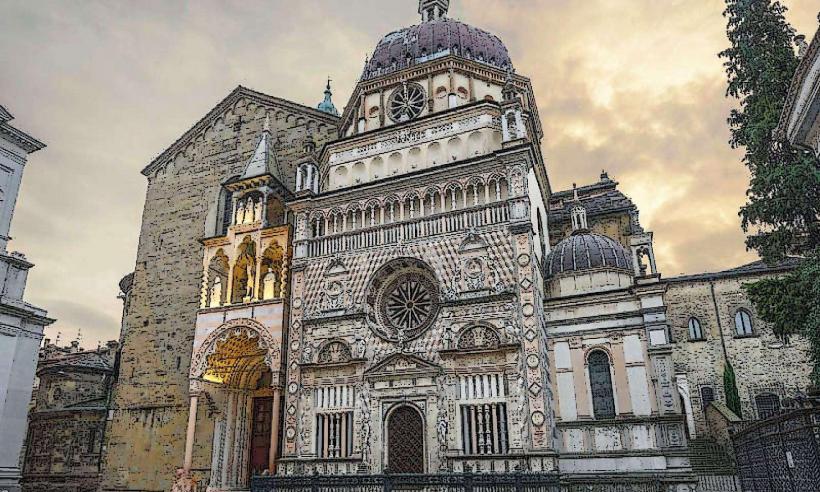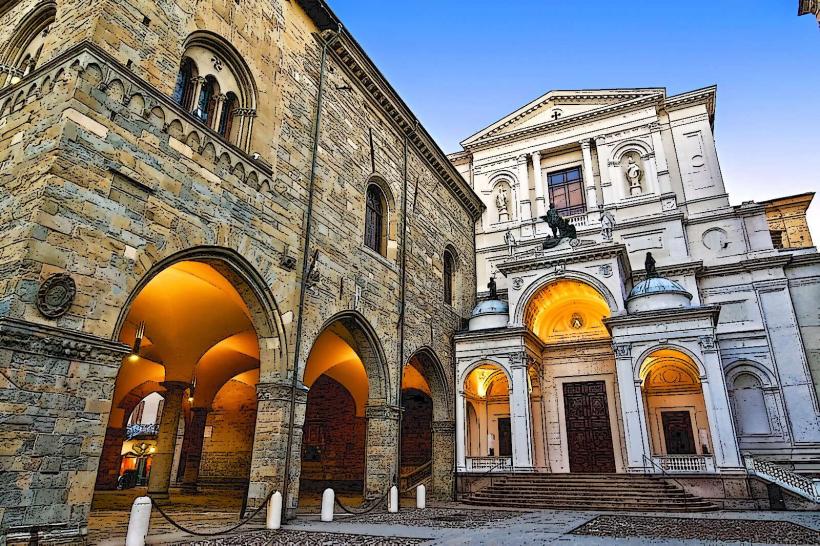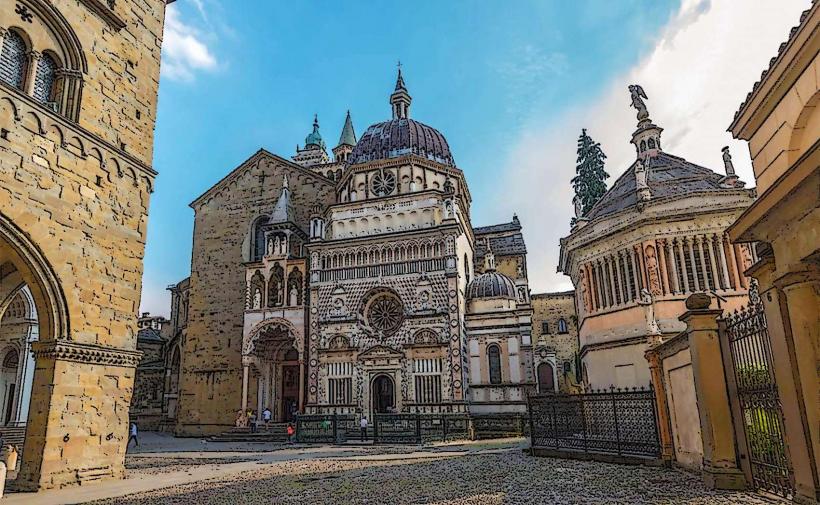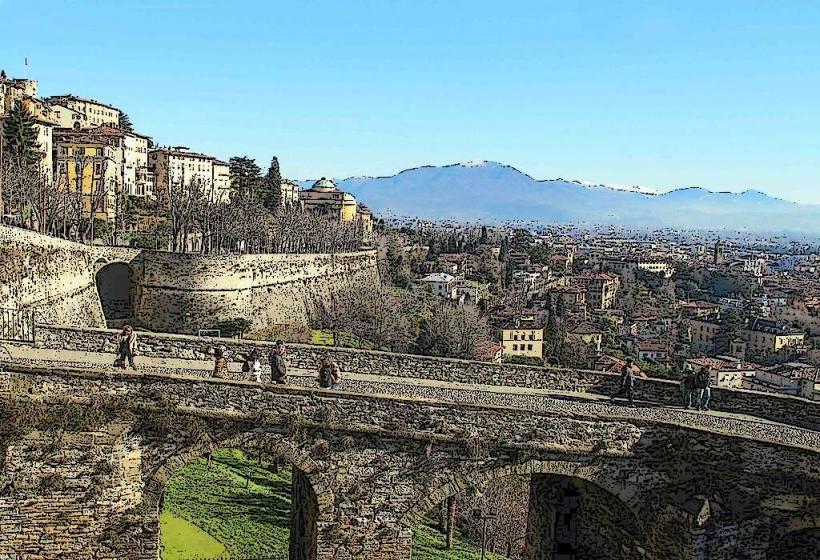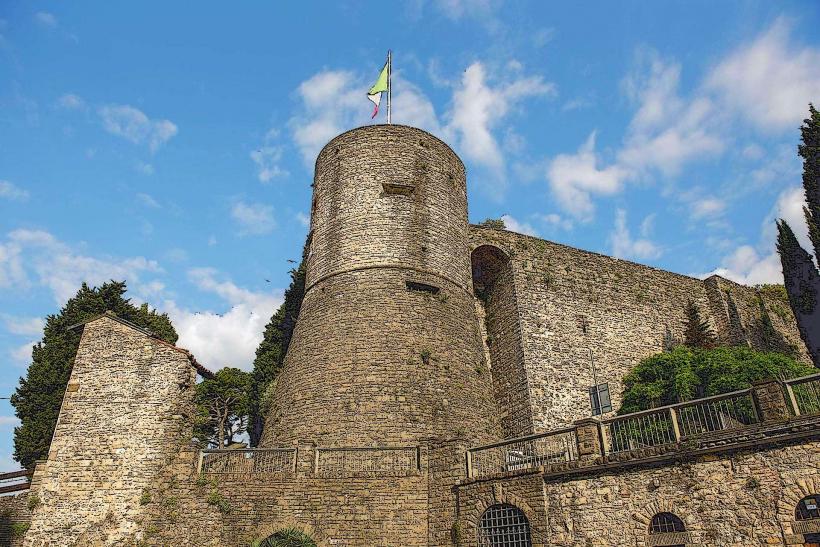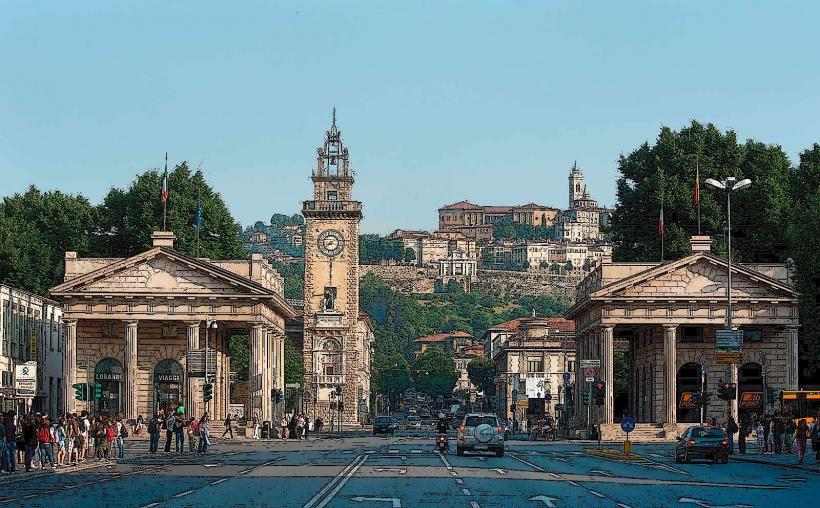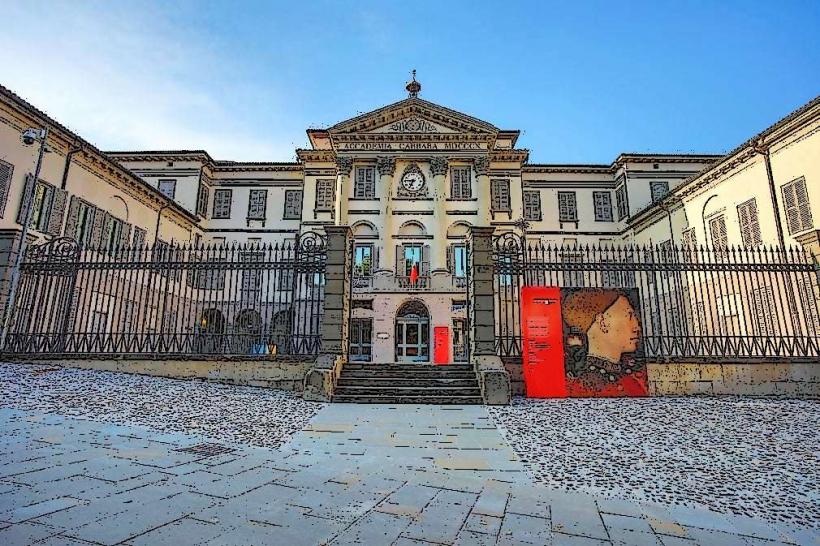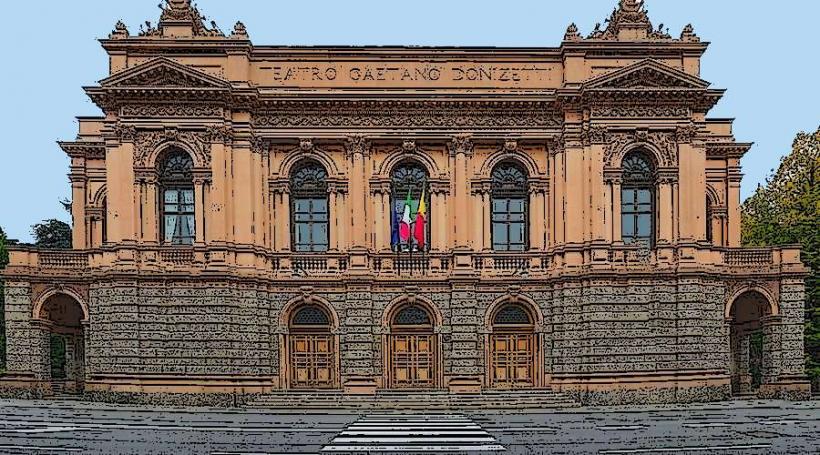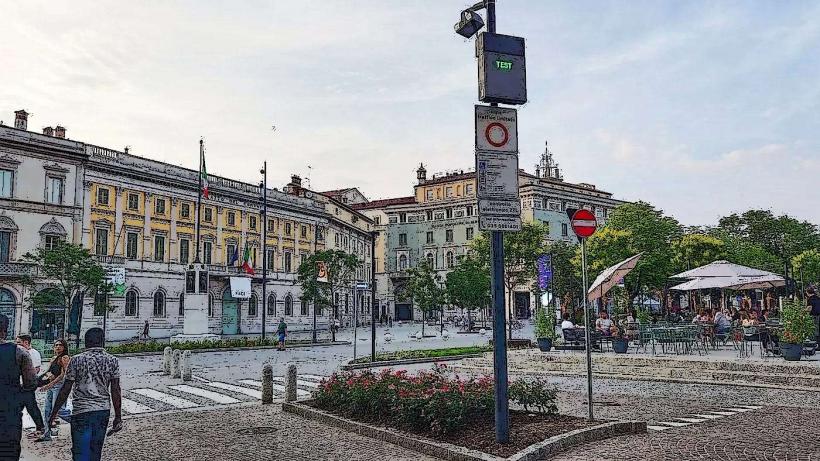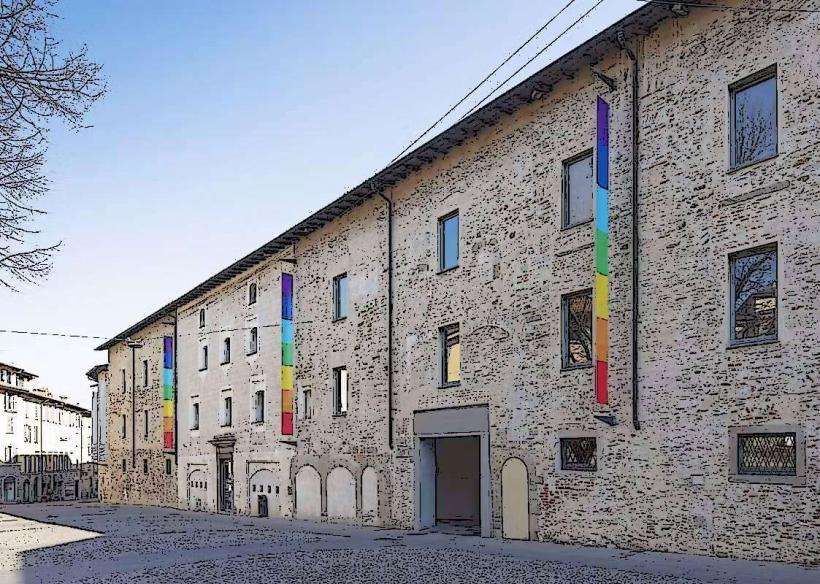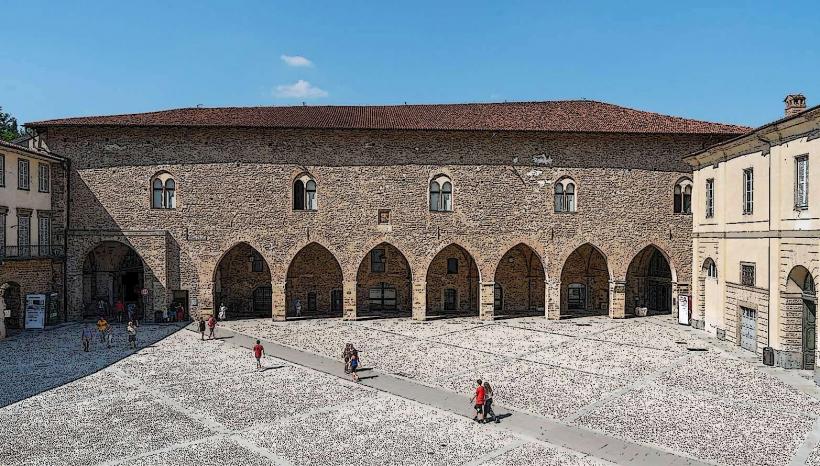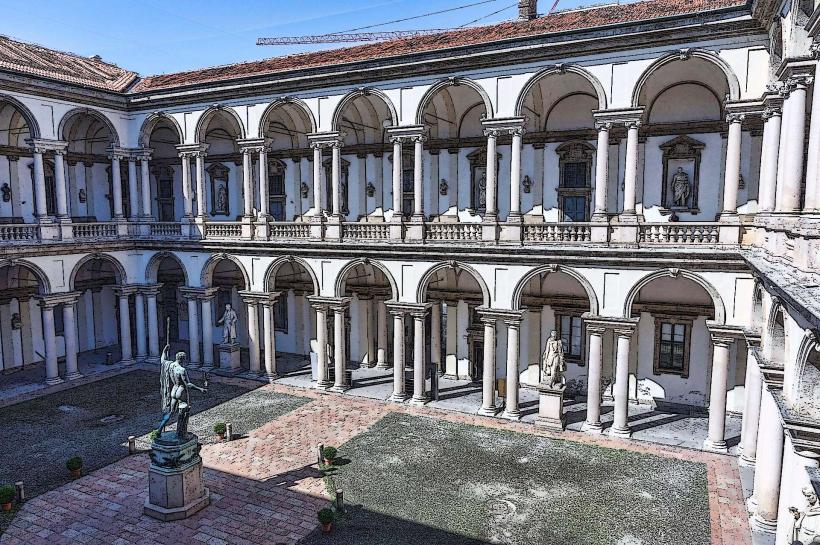Information
Landmark: Basilica di Santa Maria MaggioreCity: Bergamo
Country: Italy
Continent: Europe
The Basilica di Santa Maria Maggiore is one of the most significant and impressive churches in Bergamo, located in the Città Alta (Upper Town). A masterpiece of medieval and Renaissance architecture, it holds a prominent position both historically and artistically. The basilica is renowned for its stunning interior, rich history, and artistic treasures, making it one of the must-see landmarks of Bergamo.
Key Features and Description:
1. Historical Background:
- The origins of the Basilica di Santa Maria Maggiore can be traced back to the 12th century. The church was originally built as a Romanesque structure and was dedicated to the Virgin Mary. It was built over an earlier church and was designed to reflect the growing importance of Bergamo as a religious and civic center during the medieval period.
- The church has undergone various renovations and expansions over the centuries, especially during the Renaissance period, which has contributed to its current architectural grandeur.
- In addition to its religious significance, the basilica was also a symbol of the city’s power and wealth, particularly during its time under Venetian rule.
2. Architectural Style:
- Romanesque Foundations: The original structure of Santa Maria Maggiore was built in the Romanesque style, characterized by its solid, fortress-like appearance, with thick walls and semi-circular arches.
- Renaissance Additions: In the 16th century, the basilica was enhanced by Renaissance architects, including Giovanni Antonio Amadeo. This period introduced elegant elements such as frescoes, marble columns, and intricate decorative details, blending both styles seamlessly.
- Exterior: The church features a simple yet majestic façade, with large columns and statues, a large rose window at the center, and a pediment at the top. The façade’s simplicity allows the focus to be on the church’s stunning interior.
- Bell Tower: The church is accompanied by a tall bell tower, which stands beside the basilica. The bell tower, built in the 14th century, is Gothic in style and adds vertical emphasis to the church’s layout.
3. Interior and Artistic Treasures:
The interior of the Basilica di Santa Maria Maggiore is one of its greatest highlights. It combines medieval, Renaissance, and Baroque art, creating a visual experience that spans several centuries.
Frescoes: The basilica is renowned for its frescoes, particularly the Cycle of the Life of Christ, which covers the walls of the church and showcases the skill of Renaissance artists.
- The famous frescoes by Lorenzo Lotto, painted during the early 16th century, depict scenes from the life of the Virgin Mary and Christ. The frescoes are displayed in the chapels and side aisles.
Mosaic Floor: The church features a stunning mosaic floor that is designed with intricate geometric patterns and biblical scenes, showcasing the skill of the medieval artisans who created it.
Wooden Ceiling: The basilica’s wooden ceiling, painted in gold, is one of the most magnificent features. The coffered ceiling was designed by the artist Giambattista Tiepolo in the 18th century, and its rich, ornamental appearance complements the overall grandeur of the church.
Altars and Chapels: The basilica houses a number of altars and chapels, each one dedicated to various saints and figures from the Christian tradition. The Chapel of the Holy Cross is one of the most important, known for its reliquaries and the preserved wooden crucifix.
4. Cultural and Religious Significance:
- Religious Role: The Basilica di Santa Maria Maggiore remains an important religious site in Bergamo, still hosting regular masses, religious ceremonies, and special services. It is a center for pilgrimages and a spiritual landmark for the people of Bergamo.
- Civic and Ceremonial Importance: The basilica also played a key role in the civic life of the city during the Middle Ages and Renaissance. It was the site of various official ceremonies, such as the consecration of local dignitaries and important figures.
- The basilica’s location in Città Alta, the heart of Bergamo’s historical center, ties it closely to the city’s development and its medieval heritage.
5. Papal Connections:
- The basilica has strong historical connections with the Vatican and the papacy. It was visited by several popes during their travels, and there are records of papal decrees and gifts presented to the basilica over the centuries.
Modern-Day Santa Maria Maggiore:
- Tourist Attraction: Today, the Basilica di Santa Maria Maggiore is a popular site for both religious pilgrims and tourists. Its combination of historical significance and artistic beauty attracts thousands of visitors each year.
- Cultural Venue: The basilica also hosts cultural events, including classical music concerts, taking advantage of its acoustic qualities and majestic setting.
- Preservation: Efforts continue to preserve the basilica's rich artistic heritage, ensuring that its frescoes, mosaics, and architectural elements remain intact for future generations to appreciate.
Conclusion:
The Basilica di Santa Maria Maggiore is one of Bergamo’s most important and beautiful landmarks, blending historical significance with artistic grandeur. From its medieval roots to its Renaissance enhancements and Baroque flourishes, the basilica is a reflection of the city’s long and rich cultural heritage. Its frescoes, mosaic floors, and wooden ceiling are just a few of the treasures that make it an essential stop for anyone visiting Città Alta. Whether you are interested in history, art, architecture, or religion, the Basilica di Santa Maria Maggiore offers an unforgettable experience.

